| View previous topic :: View next topic |
| Author |
Message |
Attila


Joined: 24 Feb 2007
Posts: 57849
Location: Hungary
Expire: 2025-11-18
|
 Posted: Sun Nov 15, 2015 5:46 pm Post subject: Posted: Sun Nov 15, 2015 5:46 pm Post subject: |
 |
|
Attila wrote:
| Jeff Zen wrote: |
| kds315* wrote: |
| I mainly shoot wide open.... |
Thanks kds315 for having the courage to admit this.
This thread has inspired me to shoot wide open more often, and I think I will try shooting wide open exclusively for a few months as an experiment. Why? Because I'm "stupid", of course!  |
If you compare it with one stop down and see no difference , shoot wide open , if you see differences and stopped down is better change your practice ...simple
_________________
-------------------------------
Items on sale on Ebay
Sony NEX-7 Carl Zeiss Planar 85mm f1.4, Minolta MD 35mm f1.8, Konica 135mm f2.5, Minolta MD 50mm f1.2, Minolta MD 250mm f5.6, Carl Zeiss Sonnar 180mm f2.8
|
|
| Back to top |
|
 |
tb_a


Joined: 26 Jan 2010
Posts: 3678
Location: Austria
Expire: 2019-08-28
|
 Posted: Sun Nov 15, 2015 7:09 pm Post subject: Posted: Sun Nov 15, 2015 7:09 pm Post subject: |
 |
|
tb_a wrote:
| Attila wrote: |
If you compare it with one stop down and see no difference , shoot wide open , if you see differences and stopped down is better change your practice ...simple |
+1
It's really that easy. 
_________________
Thomas Bernardy
Manual focus lenses mainly from Minolta, Pentax, Voigtlaender, Leitz, Topcon and from Russia (too many to be listed here). |
|
| Back to top |
|
 |
IAZA


Joined: 16 Apr 2010
Posts: 2587
Location: Indonesia
|
 Posted: Mon Nov 16, 2015 1:32 am Post subject: Posted: Mon Nov 16, 2015 1:32 am Post subject: |
 |
|
IAZA wrote:
I agree with Ian, yes of course different lens has different performance in WO  that's why the price is different. that's why the price is different.
For those who want to shoot wideopen more.. it's about learning the techinque. One of them is:
http://www.stevehuffphoto.com/2012/03/12/shooting-wide-open-in-the-sunlight-with-fast-glass/
I want to add my reason, shooting WO is different thing, same object with stopped down maybe will get sharp, good contrast etc. same results with any lenses will do. In some case even pocket camera or smartphone will do or even better. The effect of WO will not exist in AF lenses, pocket camera or smartphone. If you get bad result with WO, try different setting/place/direction/light etc.
There's topic about using bad lens for optimum results in here, I think it's similar challenge.
Cheers

Let's see the case WO and stopped down, which one do you prefer?
1
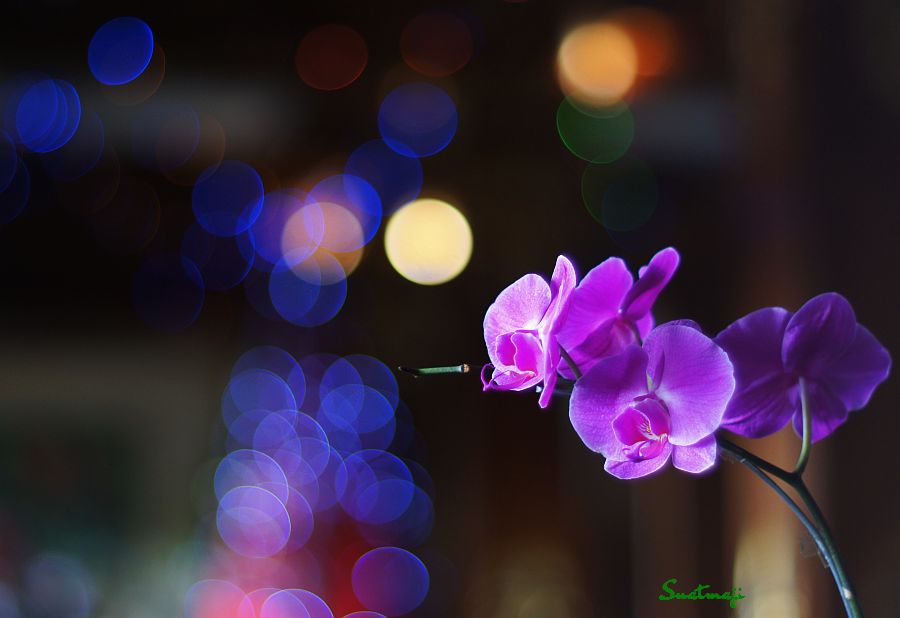
2 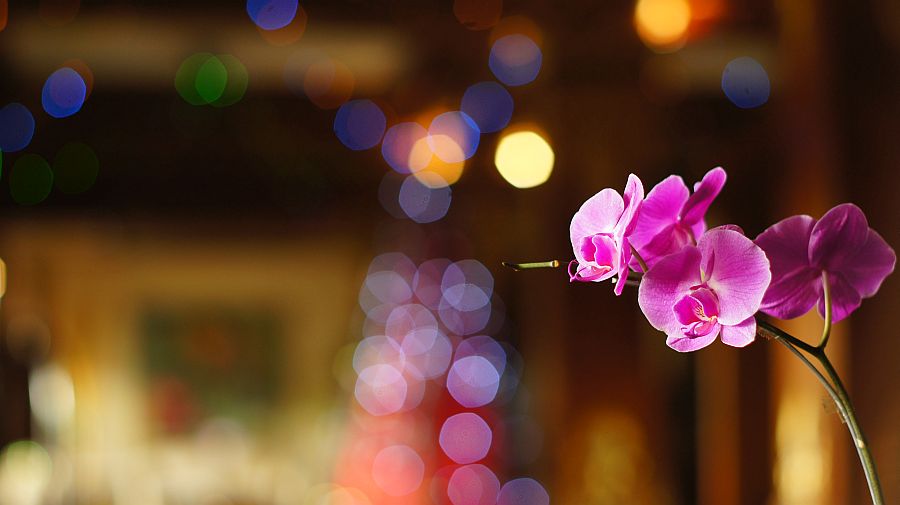
_________________
nex5, Olympus EPM1, yashica half 14, Canon eos 650 want to see samples of mine? please click My lenses
and My gallery
~Suat~ |
|
| Back to top |
|
 |
uhoh7

Joined: 24 Nov 2010
Posts: 1300
Location: Idaho, USA
|
 Posted: Mon Nov 16, 2015 2:29 am Post subject: Posted: Mon Nov 16, 2015 2:29 am Post subject: |
 |
|
uhoh7 wrote:
| IAZA wrote: |
| same object with stopped down maybe will get sharp, good contrast etc. same results with any lenses will do. |
Nonsense.  It's a very great myth all lenses are the same at 5.6, 8 or 11. The best are the best and will stand out. But the smaller the stop, that much greater it must be to do so. It's a very great myth all lenses are the same at 5.6, 8 or 11. The best are the best and will stand out. But the smaller the stop, that much greater it must be to do so.
But this time of year it gets dark around here, and I hate high ISO so I too am often shooting WO.....even in the sun 

November Sun by unoh7, 500/4 P Uncropped, Wide Open at f/4 
_________________
Making MFlenses safe for the letter *L*  |
|
| Back to top |
|
 |
Attila


Joined: 24 Feb 2007
Posts: 57849
Location: Hungary
Expire: 2025-11-18
|
 Posted: Mon Nov 16, 2015 2:49 am Post subject: Posted: Mon Nov 16, 2015 2:49 am Post subject: |
 |
|
Attila wrote:
 
great samples! To me subject is more important than bubbles in background, try half stop may sharpness will improve and bubbles will almost perfect.
_________________
-------------------------------
Items on sale on Ebay
Sony NEX-7 Carl Zeiss Planar 85mm f1.4, Minolta MD 35mm f1.8, Konica 135mm f2.5, Minolta MD 50mm f1.2, Minolta MD 250mm f5.6, Carl Zeiss Sonnar 180mm f2.8
|
|
| Back to top |
|
 |
calvin83


Joined: 12 Apr 2009
Posts: 7554
Location: Hong Kong
|
 Posted: Mon Nov 16, 2015 3:33 am Post subject: Posted: Mon Nov 16, 2015 3:33 am Post subject: |
 |
|
calvin83 wrote:
I agrees with what uhoh7. Lenses are all different even they are stopped down to 5.6, 8 or 11 etc.. This includes but not limited to spectral transmission characteristics, field curve and distortion etc. Take a Flek 2.4/35 and some third party Japanese 2.8/35, shot colorful objects within few meters in overcast day or dawn. The difference should be noticed easily.
_________________
https://lensfever.com/
https://www.instagram.com/_lens_fever/
The best lens is the one you have with you. |
|
| Back to top |
|
 |
iangreenhalgh1


Joined: 18 Mar 2011
Posts: 15685
Expire: 2014-01-07
|
 Posted: Mon Nov 16, 2015 4:23 am Post subject: Posted: Mon Nov 16, 2015 4:23 am Post subject: |
 |
|
iangreenhalgh1 wrote:
The difference between a good lens and a great lens or a good lens and a mediocre one gets smaller the more you stop down, a large part of this is that smaller apertures reduce the level of aberrations present therefore that mediocre lens that has residual uncorrected spherical aberration and therefore reduced macro contrast and colour saturation wide open or closed one stop doesn't look much different to a good lens with a higher order of corrections when the mediocre lens is stopped down and the aberrations reduced.
In short, the differences will be most apparent wide open, will be less apparent at f5.6 and will be even less apparent, maybe imperceptible at f11.
For example, take a good lens like the CZJ Tessar 2.8/50 and a very good lens like the CZJ Pancolar 1.8/50; the Pancolar will be better at f2.8, the differences will be slight at f5.6 and you'd be hard pressed to discern any differences at f11.
This is just the way optical science works and it applies whether you're talking about old Jena lenses that can be had for little money or the latest and greatest apo asph summiwhatever from Wetzlar you had to sell an organ to pay for.
_________________
I don't care who designed it, who made it or what country it comes from - I just enjoy using it! |
|
| Back to top |
|
 |
Gerald


Joined: 25 Mar 2014
Posts: 1196
Location: Brazil
|
 Posted: Mon Nov 16, 2015 11:02 am Post subject: Posted: Mon Nov 16, 2015 11:02 am Post subject: |
 |
|
Gerald wrote:
| iangreenhalgh1 wrote: |
The difference between a good lens and a great lens or a good lens and a mediocre one gets smaller the more you stop down, a large part of this is that smaller apertures reduce the level of aberrations present therefore that mediocre lens that has residual uncorrected spherical aberration and therefore reduced macro contrast and colour saturation wide open or closed one stop doesn't look much different to a good lens with a higher order of corrections when the mediocre lens is stopped down and the aberrations reduced.
In short, the differences will be most apparent wide open, will be less apparent at f5.6 and will be even less apparent, maybe imperceptible at f11.
For example, take a good lens like the CZJ Tessar 2.8/50 and a very good lens like the CZJ Pancolar 1.8/50; the Pancolar will be better at f2.8, the differences will be slight at f5.6 and you'd be hard pressed to discern any differences at f11.
This is just the way optical science works and it applies whether you're talking about old Jena lenses that can be had for little money or the latest and greatest apo asph summiwhatever from Wetzlar you had to sell an organ to pay for. |
Exactly!
_________________
If raindrops were perfect lenses, the rainbow did not exist. |
|
| Back to top |
|
 |
rudolfkremers


Joined: 10 Jun 2014
Posts: 723
Location: United Kingdom
Expire: 2015-08-08
|
 Posted: Mon Nov 16, 2015 12:41 pm Post subject: Posted: Mon Nov 16, 2015 12:41 pm Post subject: |
 |
|
rudolfkremers wrote:
Also, some lenses render a certain way wide open that fits one's photographic purpose.
It's not all about dof or low light situations.

_________________
https://www.rudolfkremers.com
https://www.flickr.com/photos/rudolfkremers/
https://www.facebook.com/rudolf.kremers
https://www.omni-labs.com |
|
| Back to top |
|
 |
IAZA


Joined: 16 Apr 2010
Posts: 2587
Location: Indonesia
|
 Posted: Tue Nov 17, 2015 4:07 am Post subject: Posted: Tue Nov 17, 2015 4:07 am Post subject: |
 |
|
IAZA wrote:
nice sample uhoh, but WO for F4 lens is different with f1,2 
uhoh
| Quote: |
Nonsense. Smile It's a very great myth all lenses are the same at 5.6, 8 or 11. The best are the best and will stand out. But the smaller the stop, that much greater it must be to do so. |
Yes that's right, but it's very hard to guess what lens is being used. at wide open the character is guessable more.
of course there're best lenses for exception but that myth not actually total wrong.
The way Attila see for my sample represent ; He like the object (flower) more than the whole frame including the bokeh. While WO shooter prefer the whole frame including bokeh as 1 enjoyable picture. In fact, for some people, the foreground object is not important, the OOF area is more pleasing 
In the end, it's about taste, you can choose whatever you like. I like both WO and stopped down of my samples for their character.
I understand why you're bothered watching crap WO shots, wasting time LOL... I dont know how to stop it too 
nice sample rudolf 
_________________
nex5, Olympus EPM1, yashica half 14, Canon eos 650 want to see samples of mine? please click My lenses
and My gallery
~Suat~ |
|
| Back to top |
|
 |
uhoh7

Joined: 24 Nov 2010
Posts: 1300
Location: Idaho, USA
|
 Posted: Tue Nov 17, 2015 6:17 am Post subject: Posted: Tue Nov 17, 2015 6:17 am Post subject: |
 |
|
uhoh7 wrote:
| calvin83 wrote: |
| I agrees with what uhoh7. Lenses are all different even they are stopped down to 5.6, 8 or 11 etc.. This includes but not limited to spectral transmission characteristics, field curve and distortion etc. Take a Flek 2.4/35 and some third party Japanese 2.8/35, shot colorful objects within few meters in overcast day or dawn. The difference should be noticed easily. |
Yes, it's funny that the obvious should be so often overlooked. The Canon LTM 50/1.2 peaks at F/4 and degrades from there. But yet we are to believe at F/11 it is the same as 50 Summicron v4 LOL.
But minds are made up on the point. Holga and 55 micro, all the same stopped down  Well, even I admit, at f/16 color transmission is dominant differentiator. But F/11? This is where many lenses peak, and most fast lenses are still way more crisp than wide open. Well, even I admit, at f/16 color transmission is dominant differentiator. But F/11? This is where many lenses peak, and most fast lenses are still way more crisp than wide open.
Speaking of "wide open":
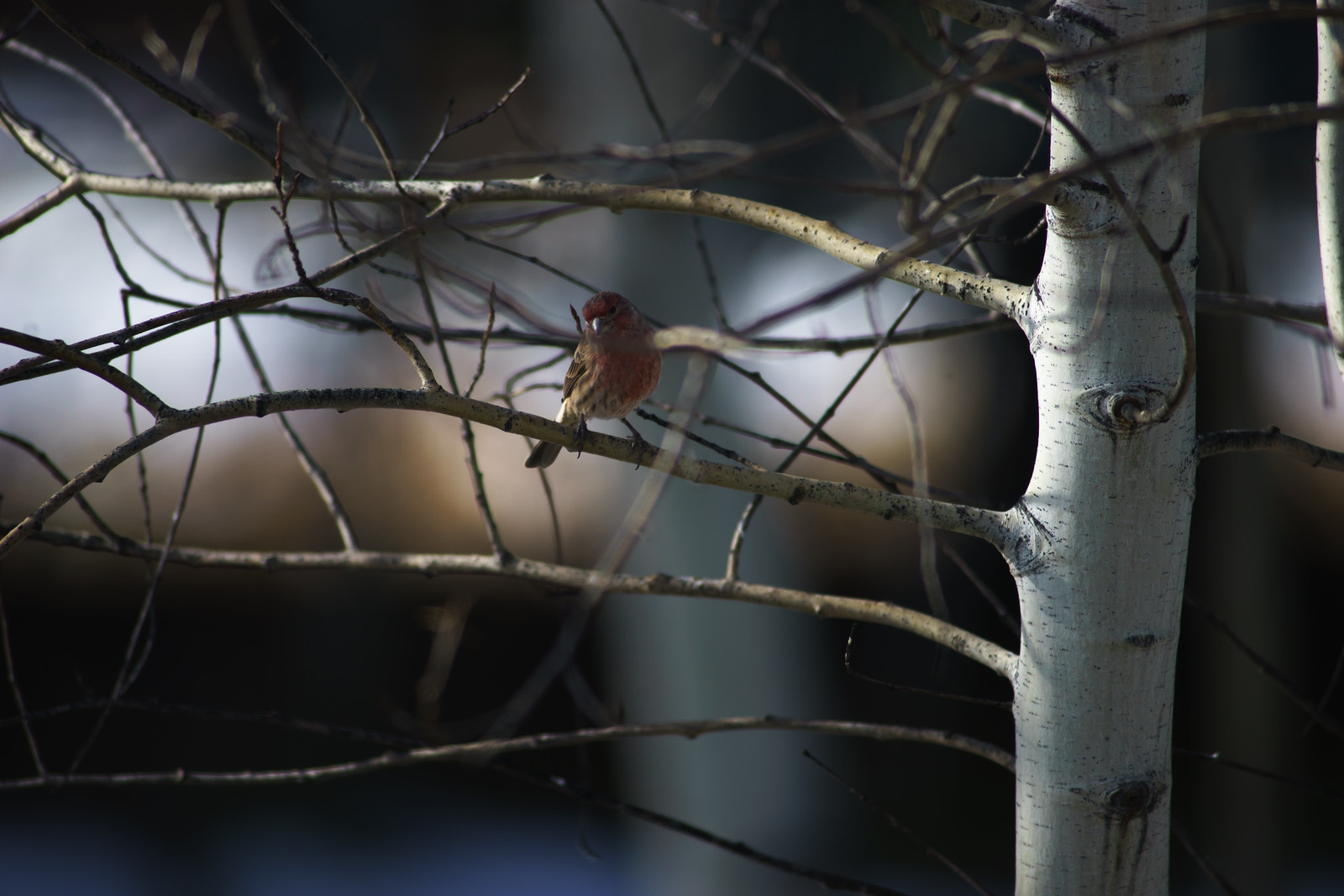
November Bright by unoh7, Nikkor 500/4 P wide open, handheld, un-cropped 
Maybe we should have a thread on which lenses are best for cropping?
_________________
Making MFlenses safe for the letter *L*  |
|
| Back to top |
|
 |
calvin83


Joined: 12 Apr 2009
Posts: 7554
Location: Hong Kong
|
 Posted: Tue Nov 17, 2015 10:41 am Post subject: Posted: Tue Nov 17, 2015 10:41 am Post subject: |
 |
|
calvin83 wrote:
I bet the wide open sharpness of your Nikkor 500/4 P will be better than many budget 500s stopped down to F8. 
_________________
https://lensfever.com/
https://www.instagram.com/_lens_fever/
The best lens is the one you have with you. |
|
| Back to top |
|
 |
Gerald


Joined: 25 Mar 2014
Posts: 1196
Location: Brazil
|
 Posted: Tue Nov 17, 2015 1:06 pm Post subject: Posted: Tue Nov 17, 2015 1:06 pm Post subject: |
 |
|
Gerald wrote:
The best way to know the performance of a lens is by measuring it. The graphs below show the measurements of MTF50 made by Lenstip.com for Zeiss Otus 55mm F1.4 and Canon 50mm F1.8. The Otus is a very expensive lens. It costs $4000 and is a reference of performance. The Canon costs only $125 and is one of the cheapest lenses on the market. With what a Otus 50mm F1.4 costs, it is possible to buy 32 Canon 50mm F1.8.
Zeiss Otus 55mm F1.4:
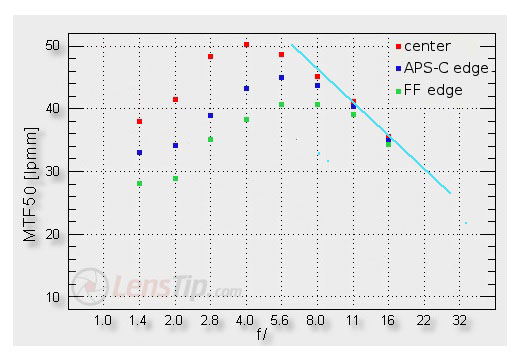
Canon 50mm F1.8:

The larger the value of MTF50, the better the performance. However, from my observations, a variation of 25% in MTF50 is barely visible in a real photograph.
Note that at fully open apertures the performances are the worst. As aperture closes, aberrations decrease and so performance improves, but only until diffraction kicks in and performance begins to fall again. The blue line gives an idea of the performance of the lens free of aberrations, for which performance is given only by diffraction. The performance of a "diffraction-limited" lens is given only by the F-number and the wavelength of light.
Note that for the two lenses the performances in the center of field peak at F4. You would hardly notice any difference in the quality of the images produced by any of these lenses at F4 or smaller apertures. At field edges the performance is maximum at F8 for Otus, and F11 for Canon. In practice, you probably wouldn't see any difference in image quality at the edges if the aperture is set to F11 or smaller.
_________________
If raindrops were perfect lenses, the rainbow did not exist. |
|
| Back to top |
|
 |
iangreenhalgh1


Joined: 18 Mar 2011
Posts: 15685
Expire: 2014-01-07
|
 Posted: Tue Nov 17, 2015 4:32 pm Post subject: Posted: Tue Nov 17, 2015 4:32 pm Post subject: |
 |
|
iangreenhalgh1 wrote:
Excellent explanation Gerald, the graphs really help to make it clearer.
| Gerald wrote: |
| Note that for the two lenses the performances in the center of field peak at F4. You would hardly notice any difference in the quality of the images produced by any of these lenses at F4 or smaller apertures. At field edges the performance is maximum at F8 for Otus, and F11 for Canon. In practice, you probably wouldn't see any difference in image quality at the edges if the aperture is set to F11 or smaller. |
Having owned the Canon, I reckon that stop of difference in edge performance is due to field curvature as I noticed the Canon had some field curvature when using it.
The main thing I take from those graphs is simply this - all modern 50s are more than good enough and therefore it is the non-technical aspects such as composition, subject, lighting etc that are most important. This is why I tend to use 50s for the great majority of my work - as long as I do my part, the lens can be relied upon to perform well enough to not be the limiting factor in my results.
That is why, when I was taught photography at university that they gave us a Spotmatic and a Takumar 1.8/55 and nothing else. If the negatives weren't sharp, then it was a fault in our technique as the Tak was always sharp enough if used correctly.
_________________
I don't care who designed it, who made it or what country it comes from - I just enjoy using it! |
|
| Back to top |
|
 |
calvin83


Joined: 12 Apr 2009
Posts: 7554
Location: Hong Kong
|
 Posted: Tue Nov 17, 2015 5:09 pm Post subject: Posted: Tue Nov 17, 2015 5:09 pm Post subject: |
 |
|
calvin83 wrote:
Otus are born for those who need the sharp photos at every F stops... 
_________________
https://lensfever.com/
https://www.instagram.com/_lens_fever/
The best lens is the one you have with you. |
|
| Back to top |
|
 |
Nordentro


Joined: 24 Jun 2010
Posts: 4713
Location: Lillehammer, Norway
Expire: 2015-01-29
|
 Posted: Tue Nov 17, 2015 5:14 pm Post subject: Posted: Tue Nov 17, 2015 5:14 pm Post subject: |
 |
|
Nordentro wrote:
| Gerald wrote: |
| Note that for the two lenses the performances in the center of field peak at F4. You would hardly notice any difference in the quality of the images produced by any of these lenses at F4 or smaller apertures. At field edges the performance is maximum at F8 for Otus, and F11 for Canon. In practice, you probably wouldn't see any difference in image quality at the edges if the aperture is set to F11 or smaller. |
Exactly, this is why I do not care much about fast lenses if they don`t perform decent from wide open. I would rather use a smaller, cheaper and slower lens if I have to stop down anyway.
_________________
Lars | Manuellfokus.no |
|
| Back to top |
|
 |
iangreenhalgh1


Joined: 18 Mar 2011
Posts: 15685
Expire: 2014-01-07
|
 Posted: Tue Nov 17, 2015 7:23 pm Post subject: Posted: Tue Nov 17, 2015 7:23 pm Post subject: |
 |
|
iangreenhalgh1 wrote:
| calvin83 wrote: |
Otus are born for those who need the sharp photos at every F stops...  |
Exactly, it is an example of a lens designed to perform perfectly wide open. There are very, very few others. Hence the Otus is so big and heavy - exotic glass types and aspheres needed to get that level of performance at full aperture. You can make a lens that matches it stopped down but has inferior wide open performance without exotic glass and aspheres, which is what the Canon 1.8/50 is.
_________________
I don't care who designed it, who made it or what country it comes from - I just enjoy using it! |
|
| Back to top |
|
 |
poilu

Joined: 26 Aug 2007
Posts: 10471
Location: Greece
Expire: 2019-08-29
|
 Posted: Tue Nov 17, 2015 8:42 pm Post subject: Posted: Tue Nov 17, 2015 8:42 pm Post subject: |
 |
|
poilu wrote:
| Pontus wrote: |
| People who only shoot wide open really miss out on a lot of lenses which could actually be better stopped down to the maximum aperture of a slower lens which happens to be a good performer wide open. |
it is not a secret that slow lenses are better,cheaper and lighter than fast lenses
My Sony RX100 fit in my pocket and make sharp pics
My phone also make good pics and fit even better in my pocket
wide open is fun, but fun is difficult to explain Why make it simple when it can be complicated ?
_________________
T* |
|
| Back to top |
|
 |
Gerald


Joined: 25 Mar 2014
Posts: 1196
Location: Brazil
|
 Posted: Thu Nov 19, 2015 7:37 pm Post subject: Posted: Thu Nov 19, 2015 7:37 pm Post subject: |
 |
|
Gerald wrote:
| calvin83 wrote: |
| Otus are born for those who need the sharp photos at every F stops... |
Weel, what is a sharp lens? Sharpness is always a relative concept. A lens can be said sharp or soft only when compared to another lens. I have already compared the Zeiss Otus with the Canon 50mm F1.8, so just for fun let's compare now the Otus with a Pentacon 50mm F1.8. Crazy? The Pentacon 50mm F1.8 is one of the most affordable normal lenses in the world. Millions of Praktica cameras were produced in the former East Germany, and almost all were equipped with a normal lens Pentacon 50mm F1.8. How such a humble lens could be compared to a super-expensive super-heavy-weight super-mighty Zeiss Otus?
Zeiss Otus 55mm F1.4 vs Pentacon 50mm F1.8
The graph below is from Lenstip.com, but I added the values of MTF50 (pink dots) which I measured for my Pentacon 50mm F1.8 lens SN 7860435. The values of MTF50 for the Pentacon are measurements for center of field, so they must be compared to the corresponding values for Otus given by the red dots.
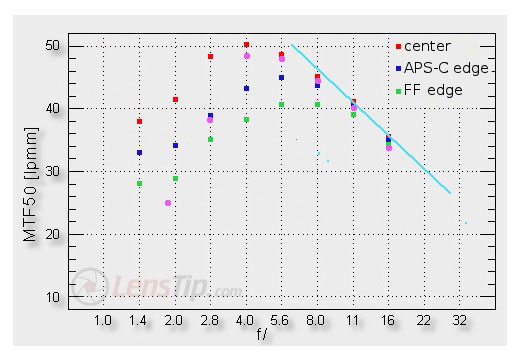
The wide open resolution of the Pentacon is modest. Indeed, at the center of fied it is even worse than the Otus at the edges at F1.4! But make no mistake, the Pentacon performance is typical for lenses of the same type, and if you stop down by just one stop, the resolution in the center increases rapidly, so the Pentacon performance at F2.8 becomes as good as the Otus at full aperture. Moreover, at F4 the Pentacon practically catch up with the Otus and from there on, the performances of both lenses become virtually identical.
Naturally, the performance of Pentacon at the edges also improves with stopping down, but slowly than in the center. At F5.6, the Pentacon resolution at edges is approximately equal to Otus wide open. No doubt Pentacon's performance cannot keep up with Otus, but at F11, and especially at F16, the differences in performance are pretty small.
What lessons can we draw from this comparison?
First, stopping down can be magical. Lenses of relatively simple design like Double Gauss benefit extraordinarily by closing the aperture by 2 or 3 stops. This is especially true for the center of field. Second, do not underestimate any Double Gauss lens simply because it is plentiful and cheap. In fact, almost all 50~58mm F1.7~2 lenses with 6 optical elements have similar performance. The differences between these lenses are more mechanical than optical. By the way, I read somewhere about a person who collected 123 lenses of focal length in the range of 40 to 58mm. Such people are looking for the optical Holy Grail. They will ever find it. Such type of search is just a waste of time and money. One of the beauties of today's photography is that you do not need a pile of money to take good photos.
Last but not least, many old lenses do not perform well simply because some internal optical surface got hazy with time. A hazy lens surfaces greatly reduces the contrast and vividness of colors. Maybe this explains why so many people thinks lens shade are so important.
Zeiss Otus 55mm F1.4 vs God's lens
I have shown that if you stop down the lens by two or three stops, the Otus loses almost all advantages it has over pedestrian lenses like the Canon or Pentacon 50mm F1.8. The reason is that for F5.6 and smaller apertures, residual aberrations become negligible for all the aforementioned lenses. And when aberrations become negligible, lens performance is exactly the same because performance becomes dependent only on diffraction and, to a lesser extent, on factors such as sensor density, presence or not of anti-aliasing filter, etc.
How about comparing now the Otus with an ideal lens, i.e. a lens free of aberrations, whose performance is limited only by the diffraction of light?
According to my calculations, the MTF50 for a diffraction-limited lens is about 570 lpmm and 280 lpmm for apertures F1.4 and F2.8, respectively. The graph above shows that the performance of Otus falls short of the values given by diffraction. Disappointing? There are real lenses that come near the theoretical limits imposed by diffraction. It is the case of microscope lenses. To be fair, no lens for FF is better than Otus at F1.4 or F2.8, but no denying that the Zeiss designers had to accept, for practical reasons, a relatively high level of wide open residual aberrations.
Just out of curiosity, I have measured the resolution of my Panasonic FZ200 lens to compare (!) with Otus. At F2.8, i.e. wide open, the measured MTF50 was 105 lpmm, a value which is much higher than the resolution of Otus in the same condition. It may seem strange, but many lenses used in compact cameras come closer to the limits given by diffraction than Otus, for example.
_________________
If raindrops were perfect lenses, the rainbow did not exist. |
|
| Back to top |
|
 |
cooltouch


Joined: 15 Jan 2009
Posts: 9097
Location: Houston, Texas
|
 Posted: Fri Nov 20, 2015 2:19 am Post subject: Posted: Fri Nov 20, 2015 2:19 am Post subject: |
 |
|
cooltouch wrote:
That which has always appealed to me about photography is its almost perfect mix of art and technology. Sometimes I forget about this balance and tend to obsess over the technology at the expense of the art. And you know, sometimes I find it helps to just sit back and enjoy the art and let the tech be damned. Yes, an optic can be a technological tour de force, but I don't have to know how it was made or how it is measured in order to just enjoy how it renders a scene.
A few pics taken late this afternoon. NEX 7 with a couple of fast Canons. Some cropping was done to all of the following images.
Hibiscus flower, Canon 85mm f/1.2 SSC Aspherical @ f/1.2:

100% crop of above image:
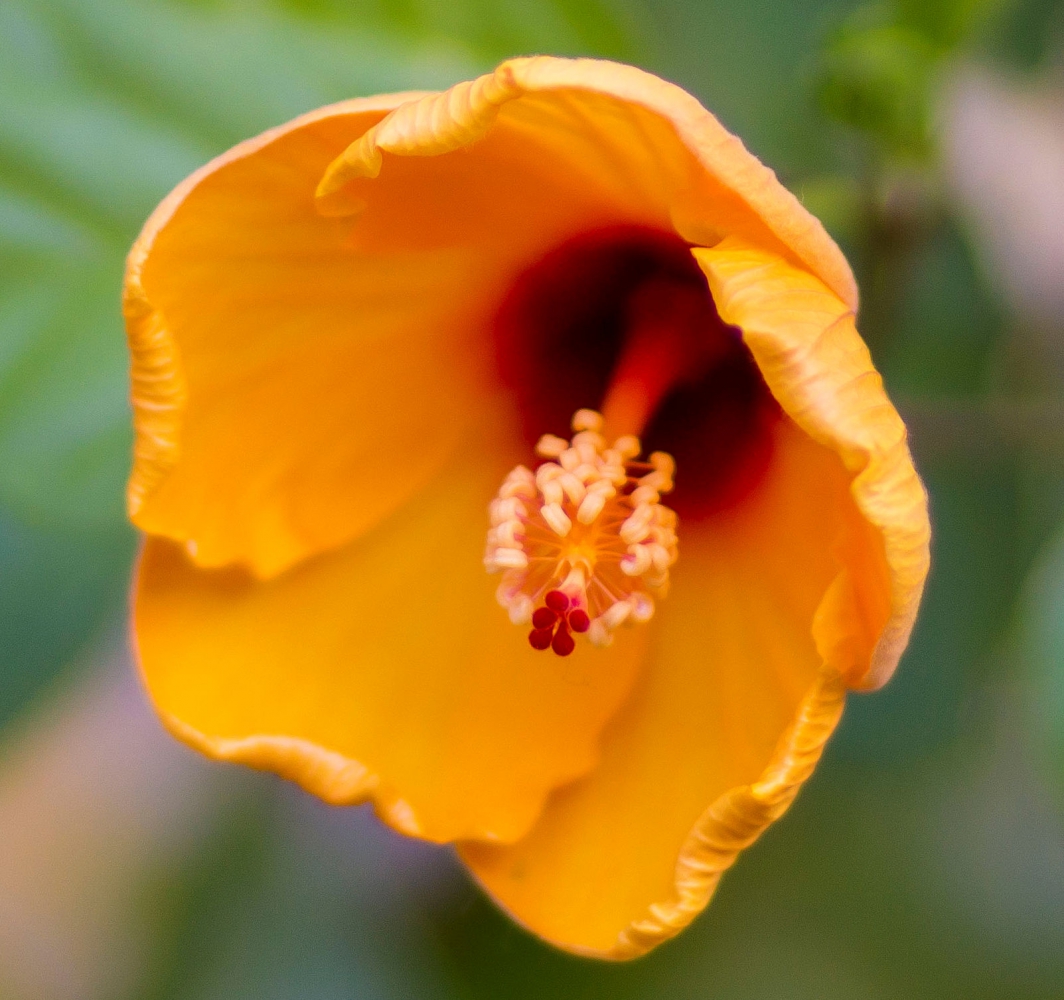
Hibiscus bud, Canon 85mm f/1.2 SSC Aspherica @ f/1.2:
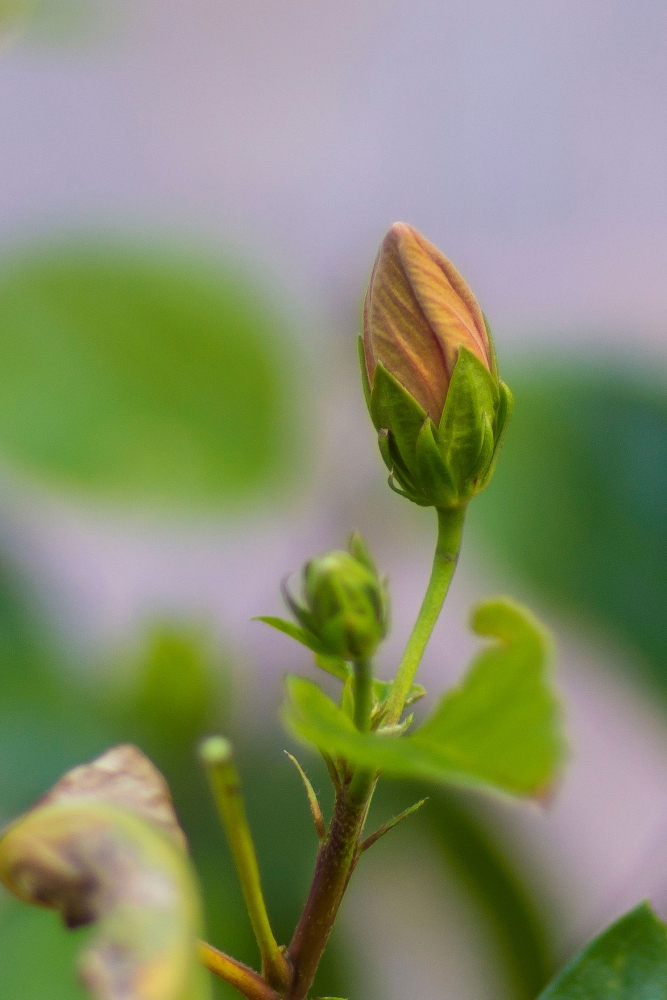
100% crop of above image:
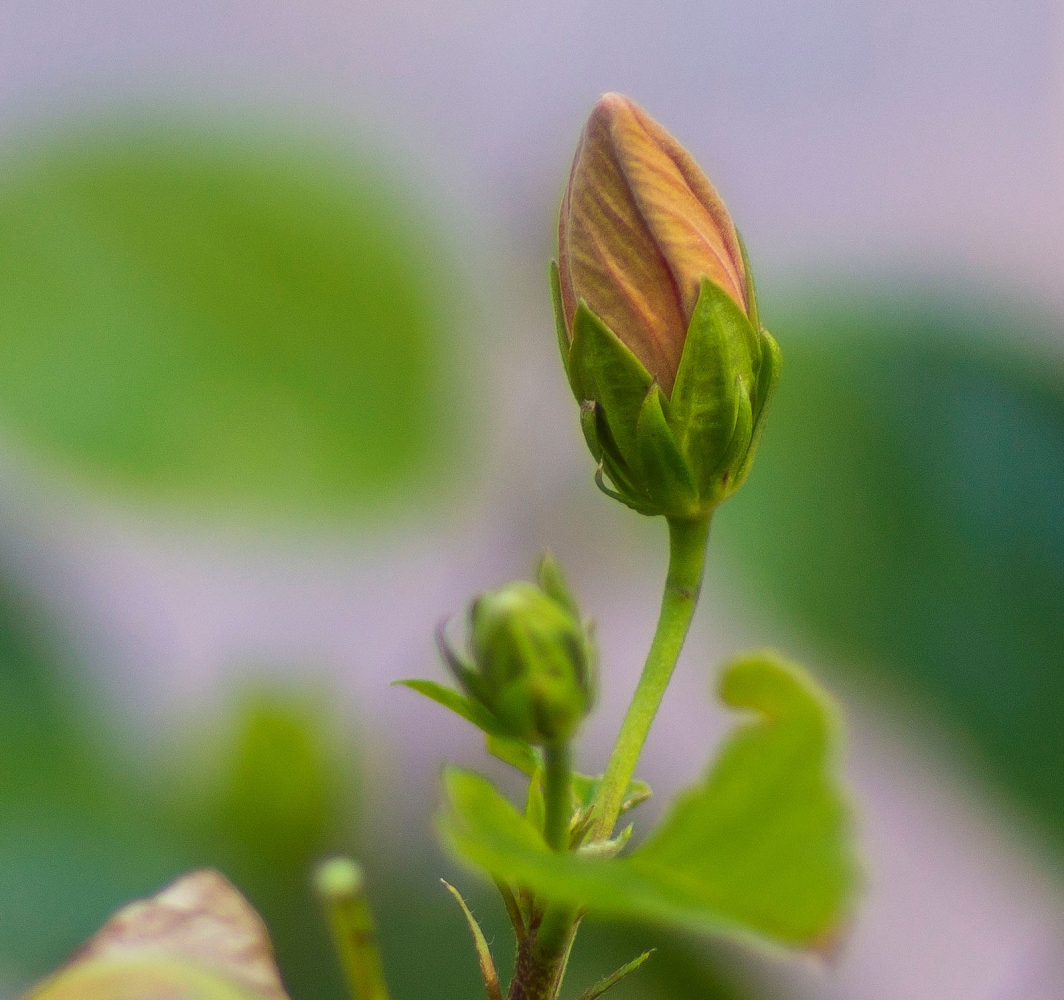
Hibiscus flower, Canon 55mm f/1.2 SSC @ f/1.2:
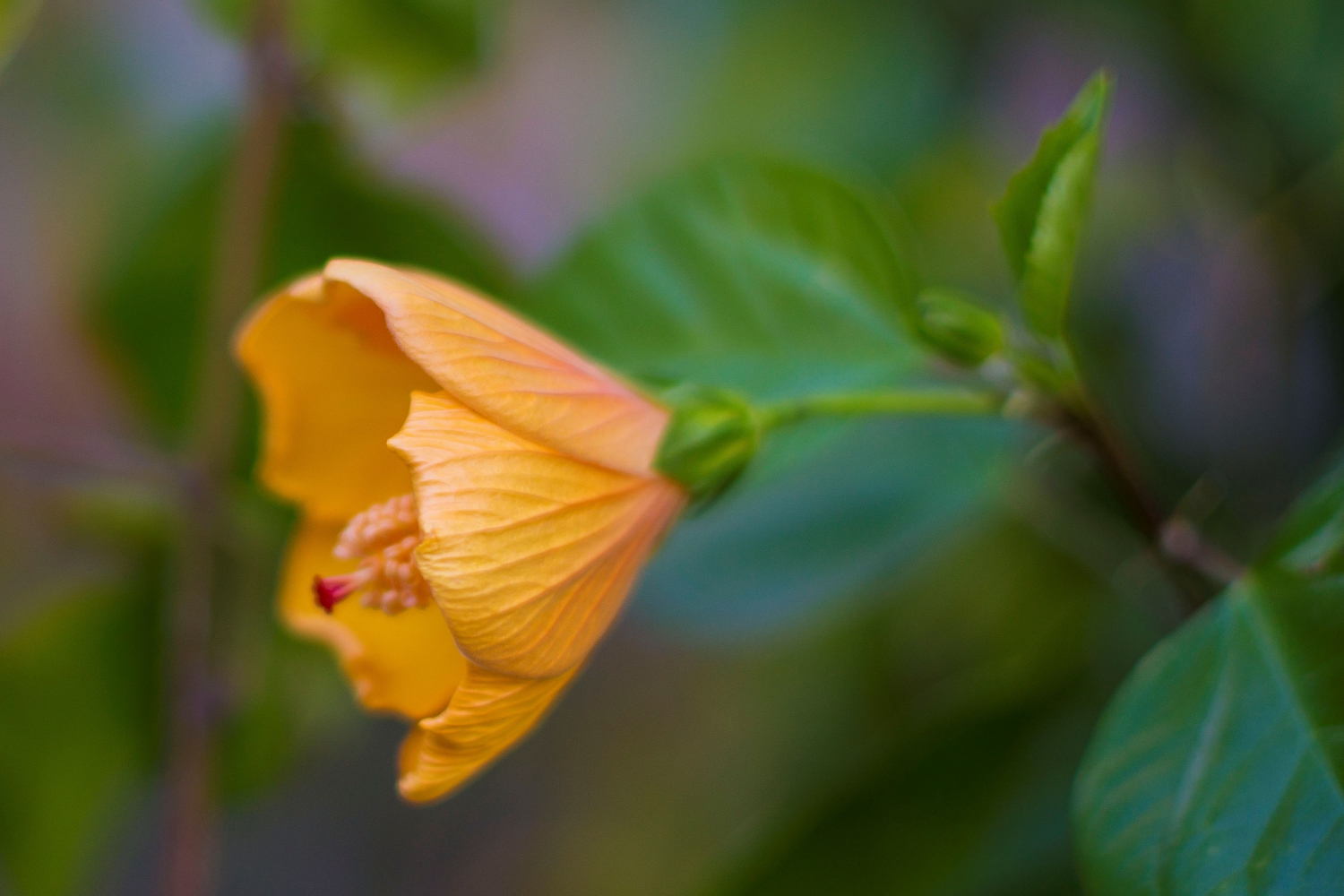
100% crop of above image:
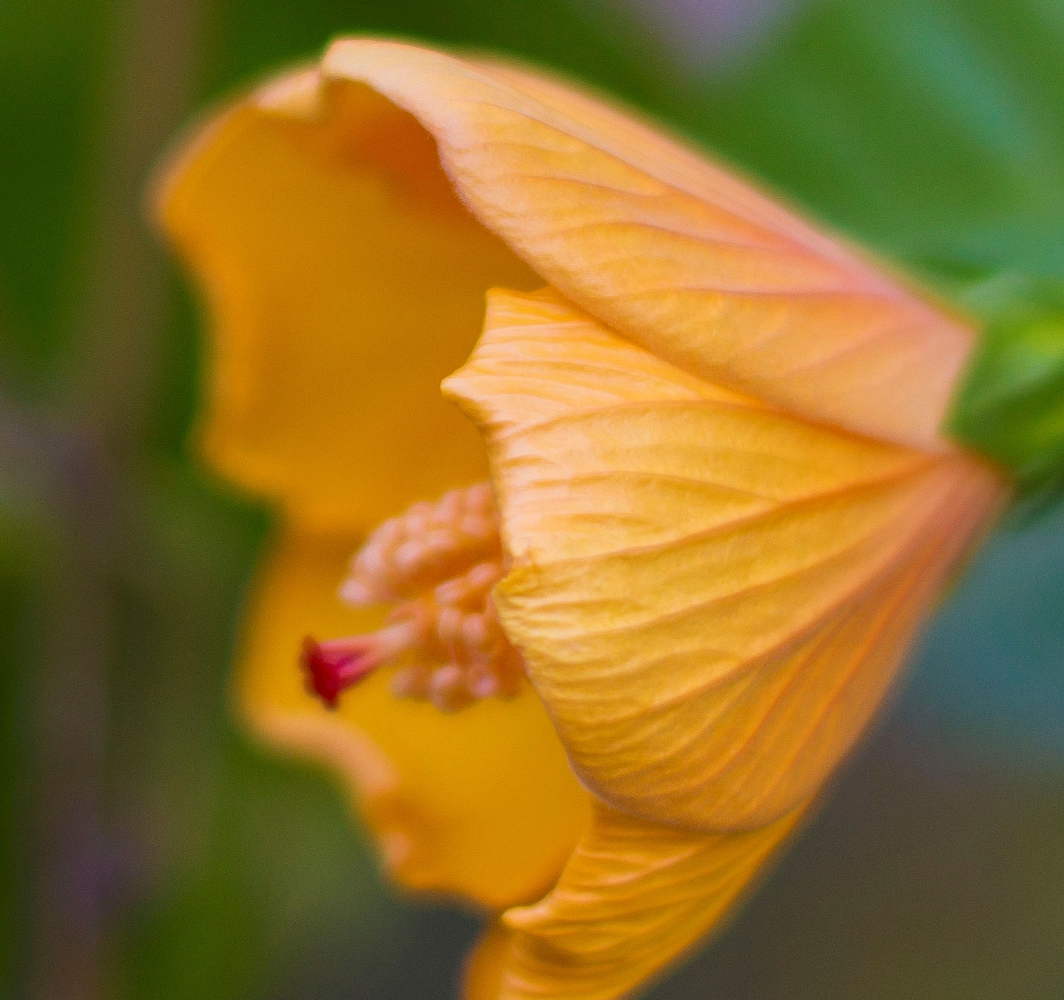
Hibiscus bud, Canon 55mm f/1.2 SSC @ f/1.2:

100% crop of above image:

Other than cropping of the images, no post processing of any sort was done.
_________________
Michael
My Gear List: http://michaelmcbroom.com/photo/gear.html
My Gallery: http://michaelmcbroom.com/gallery3/index.php/
My Flickr Page: https://www.flickr.com/photos/11308754@N08/albums
My Music: https://soundcloud.com/michaelmcbroom/albums
My Blog: http://michaelmcbroom.com/blogistan/ |
|
| Back to top |
|
 |
kds315*


Joined: 12 Mar 2008
Posts: 16544
Location: Weinheim, Germany
Expire: 2021-03-09
|
 Posted: Fri Nov 20, 2015 10:52 am Post subject: Posted: Fri Nov 20, 2015 10:52 am Post subject: |
 |
|
kds315* wrote:
Surely not "everybody's cup of tea", but mine it is and I quite like it!!   
_________________
Klaus - Admin
"S'il vient a point, me souviendra" [Thomas Bohier (1460-1523)]
http://www.macrolenses.de for macro and special lens info
http://www.pbase.com/kds315/uv_photos for UV Images and lens/filter info
https://www.flickr.com/photos/kds315/albums my albums using various lenses
http://photographyoftheinvisibleworld.blogspot.com/ my UV BLOG
http://www.travelmeetsfood.com/blog Food + Travel BLOG
https://galeriafotografia.com Architecture + Drone photography
Currently most FAV lens(es):
X80QF f3.2/80mm
Hypergon f11/26mm
ELCAN UV f5.6/52mm
Zeiss UV-Planar f4/60mm
Zeiss UV-Planar f2/62mm
Lomo Уфар-12 f2.5/41mm
Lomo Зуфар-2 f4.0/350mm
Lomo ZIKAR-1A f1.2/100mm
Nikon UV Nikkor f4.5/105mm
Zeiss UV-Sonnar f4.3/105mm
CERCO UV-VIS-NIR f1.8/45mm
CERCO UV-VIS-NIR f4.1/94mm
CERCO UV-VIS-NIR f2.8/100mm
Steinheil Quarzobjektiv f1.8/50mm
Pentax Quartz Takumar f3.5/85mm
Carl Zeiss Jena UV-Objektiv f4/60mm
NYE OPTICAL Lyman-Alpha II f1.1/90mm
NYE OPTICAL Lyman-Alpha I f2.8/200mm
COASTAL OPTICS f4/60mm UV-VIS-IR Apo
COASTAL OPTICS f4.5/105mm UV-Micro-Apo
Pentax Ultra-Achromatic Takumar f4.5/85mm
Pentax Ultra-Achromatic Takumar f5.6/300mm
Rodenstock UV-Rodagon f5.6/60mm + 105mm + 150mm
|
|
| Back to top |
|
 |
jrsilva


Joined: 06 Dec 2012
Posts: 117
Location: Portugal
|
 Posted: Fri Nov 20, 2015 11:47 am Post subject: Posted: Fri Nov 20, 2015 11:47 am Post subject: |
 |
|
jrsilva wrote:
Interesting topic.
I mostly shoot wide open for a reason;
95% of my photos are portraits and I shoot with micro 4/3 cameras, that as you may know (because of the 2x crop factor) does not offer a shallower DOF as a FF or even as a APS camera.
I like to isolate my subjects as much as I can (I'm really a shallow DOF addicted) and the native micro 4/3 fast prime lenses are very very good performers wide open. So I'm able to get that nice subject isolation.
When I've starting looking for old MF old glass my goal was to be able to find an old fast prime that could perform as good as possible wide open (or only a little bit stopped down), as I want to keep shallow DOF.
I'm very happy with my copy of the Helios 44-2 58mm f/2, because it's very acceptable at f/2 and very sharp only a little bit stopped down to f2.8 (more or less - the reversed aperture system on this preset lenses does allow to know exactly).
The Helios 44-2 made me change my thinking about the performance of old fast primes.
It proved that there are a few old lenses that are good performers even wide open.
Why did I pick up an old Helios having good modern sharp primes on my bag? (including the Olympus M.Zuiko 75mm f/1.8 )
Because I wanted to try the gorgeous bokeh of these old lenses, but without compromising sharpness and contrast.
_________________
Jaime Silva
Olympus and Panasonic micro 4/3 cameras user.
MF lenses: Helios 44-2 f/2 | Meyer-Optik Görlitz Trioplan 50mm f/2.9 | Carl Zeiss Jena Tessar 1Q 50mm f2.8 silver 12 blades |
Fujinon 55mm f/2.2
https://www.flickr.com/photos/jaimesilva00/
https://www.facebook.com/jaimesilva.photographya
Last edited by jrsilva on Fri Nov 20, 2015 11:50 am; edited 2 times in total |
|
| Back to top |
|
 |
kds315*


Joined: 12 Mar 2008
Posts: 16544
Location: Weinheim, Germany
Expire: 2021-03-09
|
 Posted: Fri Nov 20, 2015 11:49 am Post subject: Posted: Fri Nov 20, 2015 11:49 am Post subject: |
 |
|
kds315* wrote:
| jrsilva wrote: |
Interesting topic.
I mostly shoot wide open for a reason;
95% of my photos are portraits and I shoot with micro 4/3 cameras, that as you may know (because of the 2x crop factor) does not offer a shallower DOF as a FF or even as a APS camera.
I like to isolate my subjects as much as I can (I'm really a shallow DOF addicted) and the native micro 4/3 fast prime lenses are very very good performers wide open. So I'm able to get that nice subject isolation.
When I've starting looking for old MF old glass my goal was to be able to find an old fast prime that could perform as good as possible wide open (or only a little bit stopped down), as I want to keep shallow DOF.
I'm very happy with my copy of the Helios 44-2 58mm f/2, because it's very acceptable at f/2 and very sharp only a little bit stopped down to f2.8 (more or less - the reversed aperture system on this preset lenses does allow to know exactly).
The Helios 44-2 made me change my thinking about the performance of old fast primes.
It proved that there are a few old lenses that are good performers even wide open.
Why did I pick up an old Helios having good modern sharp primes on my bag?
Because I wanted to try the gorgeous bokeh of these old lenses, but without compromising sharpness and contrast. |
Very well said and explained Jaime!!
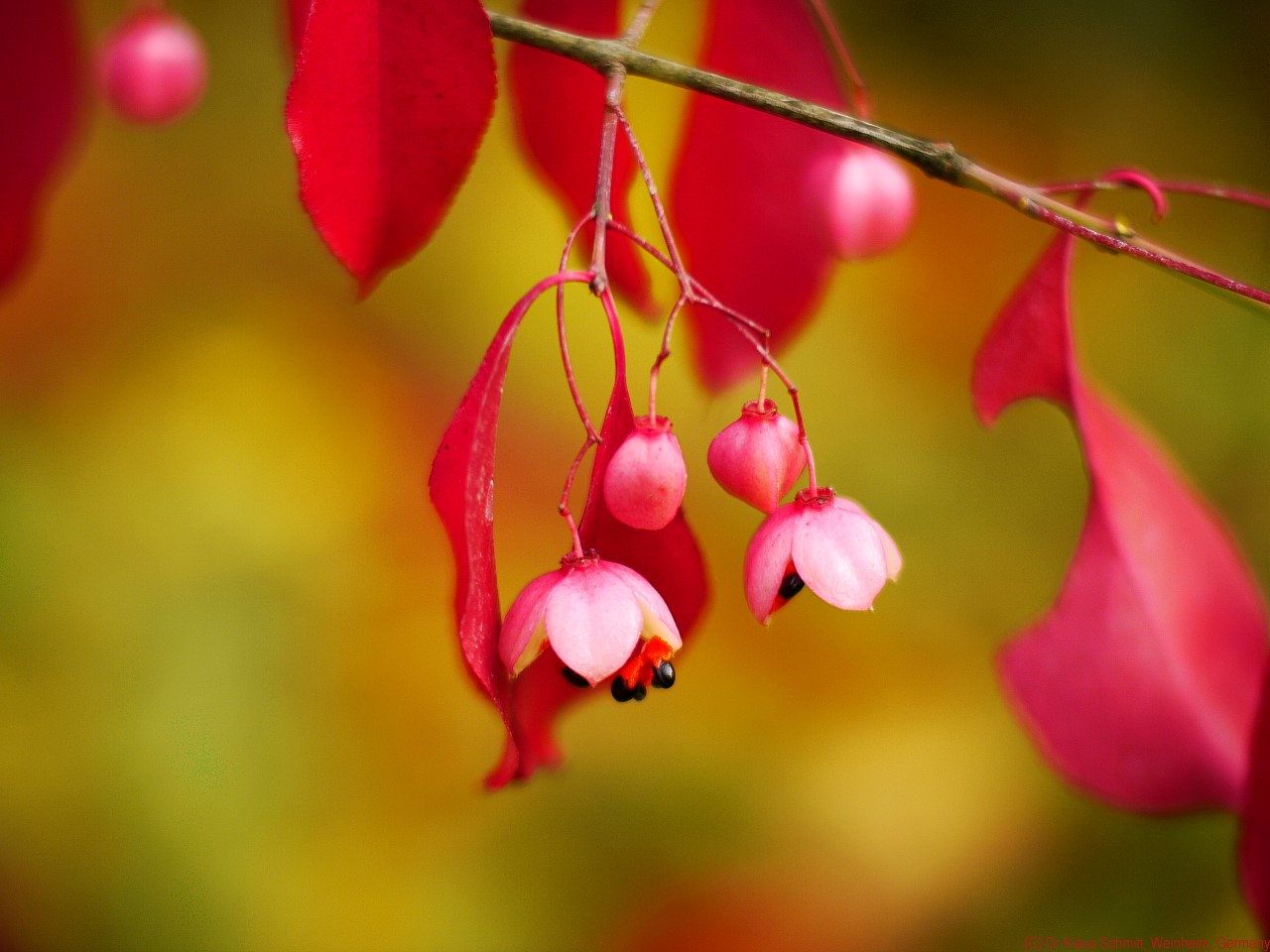
_________________
Klaus - Admin
"S'il vient a point, me souviendra" [Thomas Bohier (1460-1523)]
http://www.macrolenses.de for macro and special lens info
http://www.pbase.com/kds315/uv_photos for UV Images and lens/filter info
https://www.flickr.com/photos/kds315/albums my albums using various lenses
http://photographyoftheinvisibleworld.blogspot.com/ my UV BLOG
http://www.travelmeetsfood.com/blog Food + Travel BLOG
https://galeriafotografia.com Architecture + Drone photography
Currently most FAV lens(es):
X80QF f3.2/80mm
Hypergon f11/26mm
ELCAN UV f5.6/52mm
Zeiss UV-Planar f4/60mm
Zeiss UV-Planar f2/62mm
Lomo Уфар-12 f2.5/41mm
Lomo Зуфар-2 f4.0/350mm
Lomo ZIKAR-1A f1.2/100mm
Nikon UV Nikkor f4.5/105mm
Zeiss UV-Sonnar f4.3/105mm
CERCO UV-VIS-NIR f1.8/45mm
CERCO UV-VIS-NIR f4.1/94mm
CERCO UV-VIS-NIR f2.8/100mm
Steinheil Quarzobjektiv f1.8/50mm
Pentax Quartz Takumar f3.5/85mm
Carl Zeiss Jena UV-Objektiv f4/60mm
NYE OPTICAL Lyman-Alpha II f1.1/90mm
NYE OPTICAL Lyman-Alpha I f2.8/200mm
COASTAL OPTICS f4/60mm UV-VIS-IR Apo
COASTAL OPTICS f4.5/105mm UV-Micro-Apo
Pentax Ultra-Achromatic Takumar f4.5/85mm
Pentax Ultra-Achromatic Takumar f5.6/300mm
Rodenstock UV-Rodagon f5.6/60mm + 105mm + 150mm
|
|
| Back to top |
|
 |
Gerald


Joined: 25 Mar 2014
Posts: 1196
Location: Brazil
|
 Posted: Fri Nov 20, 2015 12:54 pm Post subject: Posted: Fri Nov 20, 2015 12:54 pm Post subject: |
 |
|
Gerald wrote:
From the beginning, technology has always played a central role in the development of photography. Photography has been used, among other things, as a means of artistic expression, but often one suggests that technology is enemy of art in photography. This appears, for example, in the excessive value that some photographers give to certain old lenses full of aberrations. They like to say that those lenses are more "artistic" than highly corrected lenses... Interestingly, Sigma has launched a series of new lenses with exceptional correction of aberrations. Sigma calls them "Art lenses". Go figure.
_________________
If raindrops were perfect lenses, the rainbow did not exist. |
|
| Back to top |
|
 |
jrsilva


Joined: 06 Dec 2012
Posts: 117
Location: Portugal
|
 Posted: Fri Nov 20, 2015 3:23 pm Post subject: Posted: Fri Nov 20, 2015 3:23 pm Post subject: |
 |
|
jrsilva wrote:
| kds315* wrote: |
Very well said and explained Jaime!!
 |
Gorgeous!!
Apart from my portraiture work, I'm starting to coming back to macro and that's the reason I've also picked up a Meyer Optik Trioplan 2.9/50.
_________________
Jaime Silva
Olympus and Panasonic micro 4/3 cameras user.
MF lenses: Helios 44-2 f/2 | Meyer-Optik Görlitz Trioplan 50mm f/2.9 | Carl Zeiss Jena Tessar 1Q 50mm f2.8 silver 12 blades |
Fujinon 55mm f/2.2
https://www.flickr.com/photos/jaimesilva00/
https://www.facebook.com/jaimesilva.photographya |
|
| Back to top |
|
 |
|
|
